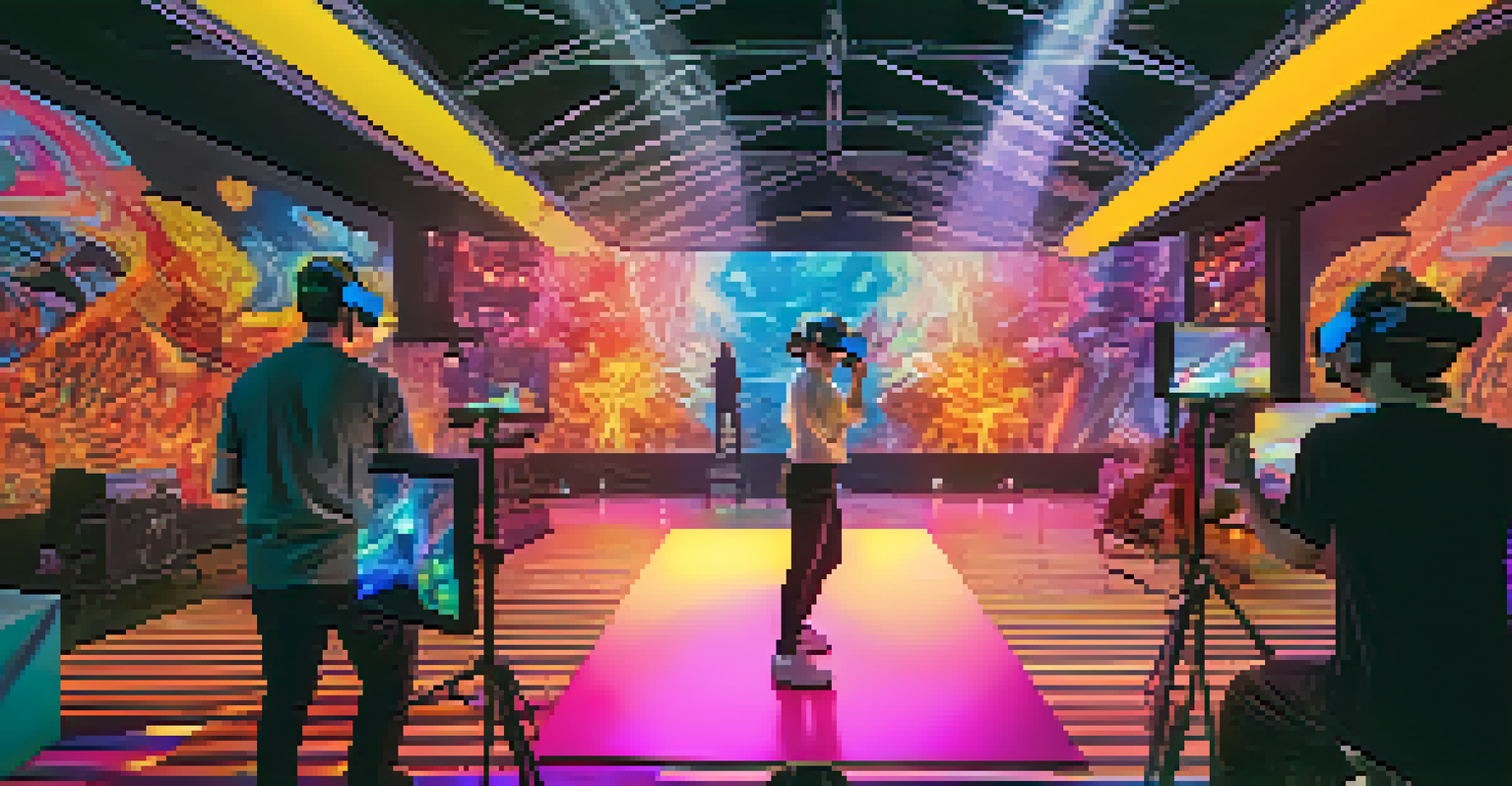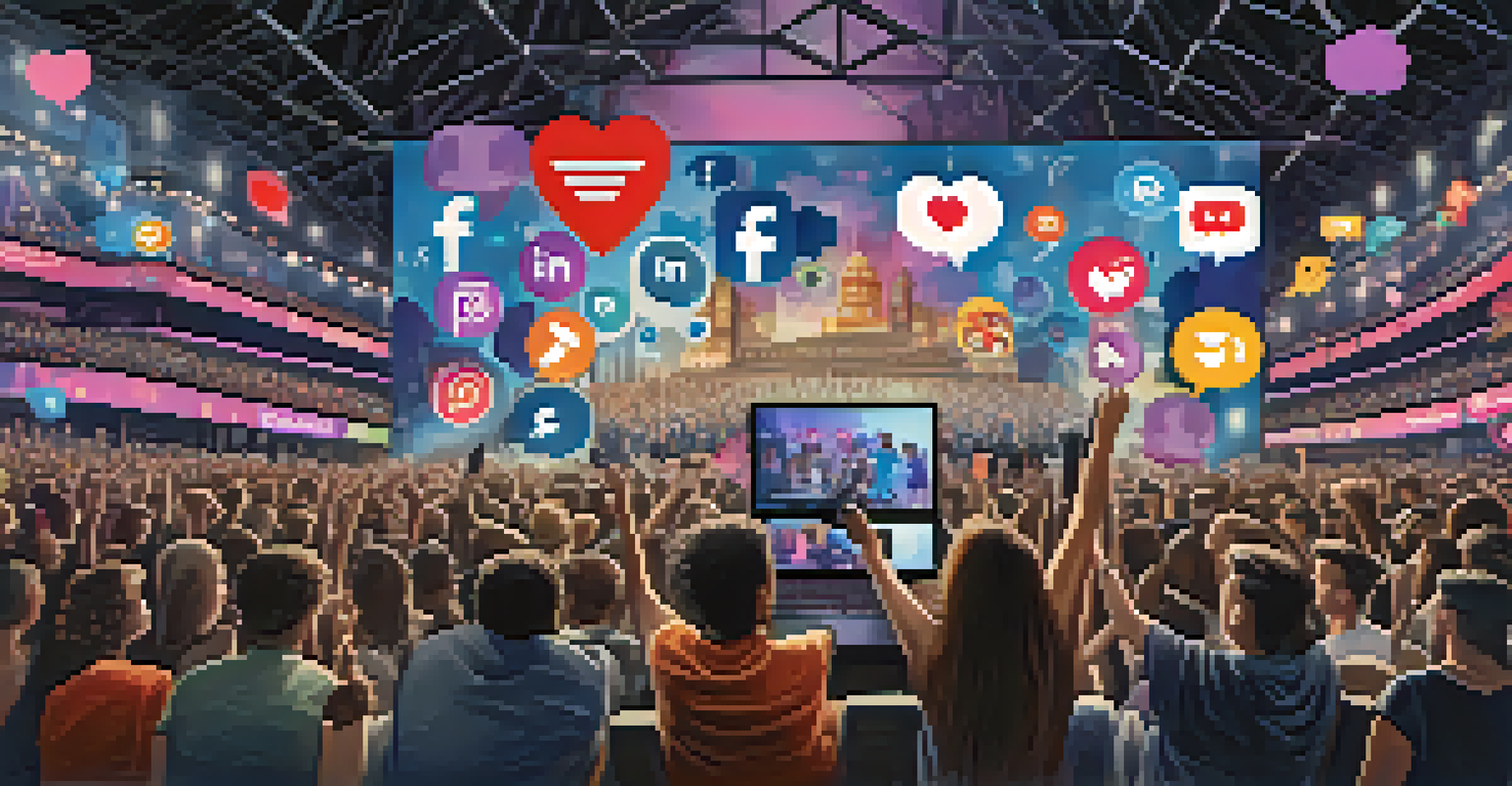How Technology is Enabling Live Music Streaming Experiences

The Rise of Live Music Streaming: A New Era
In recent years, live music streaming has surged in popularity, transforming how fans experience concerts. With platforms like YouTube, Twitch, and Instagram Live, artists can now reach audiences from the comfort of their homes. This shift not only democratizes access to live performances but also creates new revenue streams for artists. As a result, the traditional concert experience is evolving, merging physical and digital realms.
Music brings people together, and now more than ever, technology allows us to experience that connection from anywhere in the world.
Imagine being able to attend a concert without the hassle of travel or expensive tickets. Live streaming allows fans to enjoy their favorite artists in real-time, irrespective of geographical barriers. This accessibility has played a significant role in fostering a global community of music lovers who can connect over shared experiences. Plus, viewers can engage with performances in ways that were once unthinkable, such as requesting songs or chatting with fellow fans during the show.
The convenience of live streaming has also encouraged artists to experiment with their performances. Many musicians are now incorporating interactive elements, such as live Q&A sessions or behind-the-scenes glimpses, to enhance audience engagement. This innovative approach not only keeps fans entertained but also deepens their connection to the artist and the music.
Innovative Technologies Enhancing Streaming Quality
One of the key factors driving the success of live music streaming is the advancement in technology. High-definition video and audio streaming capabilities have significantly improved the quality of virtual concerts. With the integration of 4K cameras and professional sound equipment, artists can deliver an immersive experience that rivals an in-person show. This emphasis on quality ensures that fans don’t feel like they’re missing out on anything.

Moreover, technologies such as augmented reality (AR) and virtual reality (VR) are beginning to make their mark on live streaming. These tools allow fans to experience performances in a fully immersive environment, transforming their living rooms into concert halls. For instance, a VR headset can transport viewers to the front row of a concert, giving them a unique perspective that traditional viewing can't match.
Live Streaming Transforms Concerts
Live music streaming allows fans to enjoy concerts from anywhere, creating a global community and enhancing artist engagement.
As technology continues to evolve, we can expect even more enhancements to live music streaming. Innovations like 360-degree cameras and spatial audio will further revolutionize how fans consume live performances. This ongoing commitment to improving the streaming experience is essential for keeping audiences engaged and excited about future concerts.
The Role of Social Media in Live Streaming
Social media has become a powerful tool for promoting live music streaming events. Platforms such as Facebook, Twitter, and TikTok enable artists to reach a vast audience with minimal effort. By sharing snippets, behind-the-scenes content, or countdowns to performances, musicians can build anticipation and excitement among fans. This organic promotion often leads to increased viewership and engagement during live events.
The future of live music is not just about the venue; it's about the experience and how we can share it with fans everywhere.
Additionally, social media allows for real-time interaction between artists and fans. Viewers can comment, share, and react to performances as they happen, creating a sense of community and shared experience. This immediacy fosters a deeper connection between fans and artists, making the virtual concert feel more personal and engaging.
The integration of social media into live music streaming also opens up opportunities for collaboration and cross-promotion. Artists can partner with influencers or other musicians to reach new audiences and enhance their visibility. This collaborative spirit not only strengthens the live music community but also paves the way for innovative and exciting performances.
Monetization Strategies for Artists
As live music streaming grows, so do the various monetization strategies available to artists. Traditional ticket sales have evolved into digital tickets, subscriptions, and pay-per-view models, allowing musicians to generate income from their performances. This flexibility enables artists to cater to different audience preferences while maximizing their revenue potential.
Moreover, platforms like Patreon and Ko-fi allow fans to support their favorite artists directly. By offering exclusive content, behind-the-scenes access, or personalized interactions, musicians can cultivate a loyal fanbase willing to invest in their work. This direct-to-fan approach not only boosts income but also strengthens the relationship between artists and their supporters.
Tech Enhancements Boost Experience
Advancements in technology, such as AR and VR, significantly improve the quality of live music streaming, offering immersive experiences.
Additionally, brand partnerships and sponsorships are becoming increasingly popular in the live streaming landscape. Artists can collaborate with brands to create unique experiences or promote products during their performances. This symbiotic relationship benefits both parties, offering brands visibility while providing artists with additional funding and resources.
Accessibility and Inclusivity in Live Streaming
Live music streaming has the potential to be more inclusive than traditional concerts, allowing wider access for fans with disabilities. Features like closed captioning and sign language interpretation can be integrated into live streams, ensuring that everyone can enjoy the performance. This focus on accessibility is crucial in creating an equitable experience for all fans.
In addition, streaming eliminates obstacles such as venue capacity and geographical limitations, allowing fans from diverse backgrounds to participate. Fans who may have previously faced barriers to attending live events can now join in on the excitement from anywhere in the world. This inclusivity fosters a sense of belonging and community among music lovers.
The ongoing push for inclusivity within live music streaming is a significant step toward a more diverse music industry. As artists and platforms prioritize accessibility, we can expect to see a broader range of voices and perspectives represented in the live music landscape. This evolution not only enriches the music scene but also creates a more vibrant and welcoming community for everyone.
Challenges Facing Live Music Streaming
Despite its many advantages, live music streaming comes with its own set of challenges. One major hurdle is the issue of copyright and licensing, which can complicate the ability to stream certain performances. Artists must navigate a complex web of regulations to ensure they comply with copyright laws while still delivering engaging content to their fans.
Additionally, technical difficulties can arise during live streams, impacting the viewer experience. Poor internet connections or equipment malfunctions can lead to interruptions, buffering, or low-quality audio and video. These issues can frustrate both artists and fans alike, highlighting the importance of proper planning and testing before a performance.
New Monetization Strategies Emerge
Artists are exploring diverse monetization strategies, including digital tickets and direct fan support, to generate income through streaming.
Lastly, the oversaturation of live streaming events can make it difficult for artists to stand out in a crowded market. With so many performances available, fans may struggle to choose which events to attend. Artists will need to find innovative ways to differentiate themselves and capture the attention of their audience in this competitive landscape.
The Future of Live Music Streaming
Looking ahead, the future of live music streaming appears bright and full of possibilities. As technology continues to advance, we can expect even more immersive experiences that blur the lines between physical and digital performances. This ongoing evolution will likely lead to new ways for artists to connect with their audiences and share their music.
Moreover, the rise of hybrid events—combining in-person and virtual experiences—will become more commonplace. This approach allows fans to choose how they engage with their favorite artists, whether attending in person or watching from home. By catering to different preferences, artists can broaden their reach and create more inclusive experiences.

Ultimately, the future of live music streaming will be shaped by both technological advancements and the creativity of artists. As musicians continue to explore new formats and ideas, fans can look forward to exciting innovations that enhance their concert experiences. This dynamic landscape promises to keep the spirit of live music alive, regardless of where fans are located.